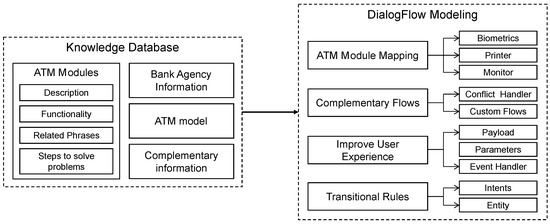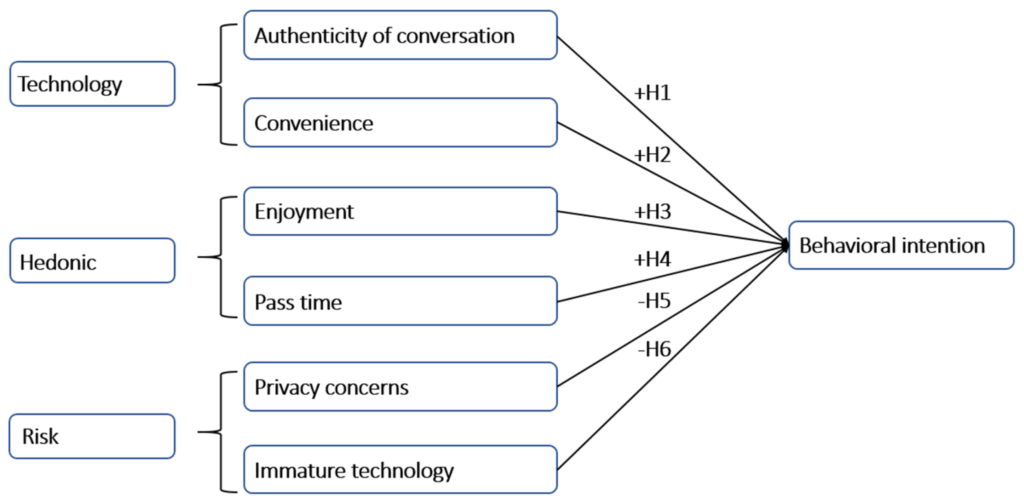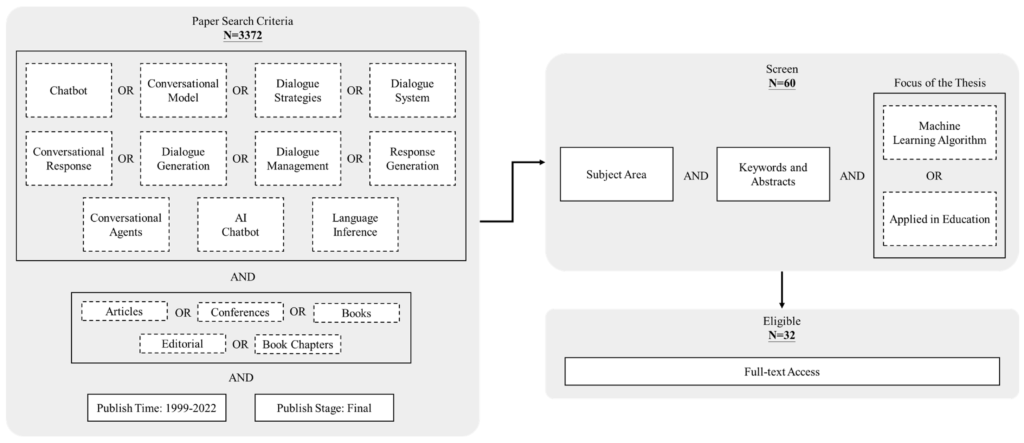Introduction: The Evolution and Potential of Chatbots
In our fast-paced digital world, the way we communicate is evolving, and a major facet of this change has been the emergence of chatbots.
Understanding the concept of chatbots
If you’ve sent a message to a business online, or interacted with your favorite brand on social media, chances are, you’ve encountered a chatbot. From answering queries to gathering customer data, these AI-powered assistants have become invaluable tools for businesses in the digital age.
Historical perspectives on the evolution of chatbots
From their rudimentary inception in the 1960s as simple algorithmic response units, chatbots have now emerged as interactive, AI-powered time and resource savers. IBM’s Watson started the trend, subsequently allowing businesses to seamlessly respond to customer queries, day or night.
The role of artificial intelligence in chatbot technology
As AI technology advances, so too does the sophistication and capacity of chatbots. They’ve moved beyond pre-programmed response pathways – modern AI can allow a chatbot to learn, adapt and predict customer behavior and response. This has brought about a massive paradigm shift in how businesses interact with their customers, fostering a much more personalized, intuitive, and efficient customer experience.
In the following sections, we’ll delve deeper into how these AI-powered chatbots have arisen as cash-flow catalysts, how businesses can potentially harness this technology for maximum profitability, and the best practices for implementing chatbots in your own operations. We’re going to explore how these virtual assistants have truly become an entrepreneur’s bestfriend in not just improving customer interaction, but in boosting business profitability.
The Intersection of Chatbots and Business: A Profit-Driven Perspective
Today, I want to talk about a fascinating new process that’s making waves in the digital industry. It’s powerful, it’s strategic, and it’s leading many businesses right to the path of success. I’m talking about chatbot implementation and this development is ushering an era of unprecedented profits in different sectors.
The scope of chatbots in different industries
When we think about chatbots, we must understand how expansive their usage has been in various industries lately. Chatbots are redefining customer service in retail by automating responses and providing 24/7 customer support. In the healthcare sector, these AI-powered digital assistants are streamlining the process of answering patient queries, scheduling appointments, and even reminding patients about medications. They’re valuable marketing agents in the ecommerce sector, functioning to personalise the shopping experience for users.
Commercial application of chatbots
Chatbots serve as a significant player in businesses’ digital arsenal today. They’re not just limited to improving customer service; they’re entirely changing the dynamic of user interactions. A chatbot is a gateway to direct communication between a business and its audience, emanating a personalized interaction that can eventually convert into a profitable transaction. This commercial application is a game-changer for businesses seeking to ramp up their consumer engagement.
Driving profitability through chatbot integration
This is where it gets even more interesting. Chatbot integration is no longer just a ‘nice to have’ feature for businesses. It’s a potent tool in driving profitability. An effective chatbot can increase cost savings by decreasing manual labor hours, enhance customer experience by delivering an immediate response, thereby exponentially maximizing your profit margin.
And that’s the essence of it! An exquisite intersection of innovators, enterprises, industries, and the chatbot revolution – leading towards a future that’s not just dynamic but also packed with potential profits.

This image is property of pub.mdpi-res.com.
The Anatomy of Profitable Chatbot Implementations
When we talk about profitable chatbot implementations, it can be helpful to break down what exactly that means. Essentially, it means using chatbots in a way that either directly drives revenue or significantly cuts down costs, thus increasing overall profitability for an online business.
Key Components That Make a Chatbot Profitable
Now, what are the key components that make a chatbot profitable? In my experience, the first and most essential element is effectiveness. A chatbot must be able to fulfill its purpose effectively, be it customer service, sales, lead generation, etc. without human intervention. The second essential component is efficiency. The chatbot should be able to handle multiple inquiries simultaneously and round the clock, ensuring high levels of customer satisfaction and saving significant man hours.
Strategic Consideration for Implementing Profitable Chatbots
When it comes to strategic consideration for implementing profitable chatbots, one must contemplate on the suitability of a chatbot for their specific business needs. One must analyze how a chatbot can benefit their business in terms of cost savings, revenue generation, and customer satisfaction. It requires a deep understanding of your business process and customer behavior.
Maximizing ROI Using Chatbots
Lastly, let’s talk about maximizing ROI using chatbots. Firstly, ensure that your chatbot is prominently placed on your website or mobile app so that it can engage with maximum users. Secondly, make your chatbot engaging and interactive to retain user’s interest. Lastly, always keep testing and optimizing your chatbot based on user feedback to ensure it effectively meets its objective.
Through all these strategies and considerations, you can surely create a cash flow catalyst by implementing a profitable chatbot for your online business.
Chatbots as Cash Flow Catalysts: Explaining the Dynamics
Before we delve deeper into the topic, it’s essential to explain chatbots’ commercial viability and how businesses use them to increase revenue and reduce costs. So, what exactly is a chatbot? A chatbot is an AI-powered tool designed to emulate human interaction, helping brands provide faster, more efficient customer service.
Understanding the Commercial Viability of Chatbots
Chatbots are not just gimmicks; they have tangible returns on investment. They can handle multiple customer queries simultaneously, save resources on customer service staff, and improve overall customer experience, making them commercially viable.
Critically, chatbots can also direct customers towards a purchasing decision more efficiently than human counterparts, leading to an increase in conversions and sales.
The Relationship Between Chatbots and Improved Cash Flow
The connection between chatbots and improved cash flow is quite straightforward. Firstly, chatbots help companies save on customer service costs. No longer do firms need to spend large proportions of their budget on massive customer service teams.
Furthermore, by providing instant response to customer inquiries, chatbots can help businesses operate 24/7. This increased availability can lead to more sales and ultimately, higher cash inflow.
Capitalizing on Chatbots for Improved Financial Outcomes
The key to truly capitalizing on chatbots lies in design and execution. Businesses need to ensure they’re integrating chatbots into their wider customer service structure effectively, ensuring they’re being utilized properly to deliver fast, satisfactory customer service.
With the right chatbot, designed and implemented effectively, a company could benefit from increased sales, reduced costs, and an improved reputation. Thus, chatbots can fundamentally act as catalysts for improved cash flow and financial success.

This image is property of www.mdpi.com.
Case Studies: Successful Chatbot Implementations and their Effect on Cash Flow
Chatbots are becoming integral components in various businesses. They act as cash flow catalysts, providing customer service, automating tasks, and giving companies a new way to monetize their business operations. In this insightful piece, we’ll get a glimpse of some chatbot implementations that have proven to be profitable, and how they have enhanced cash flow in different business.
Exploring some successful chatbot implementations
Companies like Sephora, H&M, and Starbucks have seamlessly incorporated chatbots into their business strategies. Sephora’s chatbot uses advanced algorithms to recommend products to their customers, playing a significant role in boosting their sales. On the other hand, H&M’s chatbot generates outfit ideas for its users, driving them to purchase more items and contributing significantly to its revenue stream. Starbucks’ chatbot allows customers to place their orders via text or voice command, increasing convenience and driving up sales.
The financial implications of these successful implementations
The case of these successful implementations thus highlights how chatbots can be used as tools to enhance the cash flow in businesses. By providing tailored recommendations, simplifying purchase decisions, and increasing convenience for customers, chatbots can effectively stimulate sales, encourage repeat purchases, and foster customer loyalty, all contributing to an increase in revenue.
Key learning points from these case studies
The key takeaway from these case studies is the importance of implementing chatbots wisely. Find ways to solve your customers’ problems, whether it’s through product recommendations, simplifying their purchase decisions, or offering convenience. The more value your chatbot provides to your customers, the more likely it is to draw in more revenue and create a positive impact on your business’ cash flow.
So, ready to monetize AI in your online business? Let’s explore the power of chatbots together and bring profitability to your doorstep.

This image is property of www.mdpi.com.
The Role of AI in Profitable Chatbot Implementations
As a business owner interested in scaling up operations and maximizing profits, it’s essential for me to constantly find innovative ways to reduce costs and increase effectiveness. One area where I’ve noticed a game-changer in the digital business domain is the implementation of chatbots, specifically, Artificial Intelligence (AI)-powered chatbots.
How AI technology contributes to profitable chatbot implementations
AI technology has revolutionized how businesses handle customer interactions and service. Through text-based or voice-based AI chatbots, businesses like mine can automate responses to commonly asked questions, process orders, and assist customers 24/7. As a business owner, this means reduced operational costs as there are reduced human resources required for customer service.
Additionally, AI-powered chatbots provide an extra layer of personalized customer experience. They can analyze customer behavior, enabling businesses to customize responses and recommend products based on past purchases or search history. This level of personalized communication can boost sales, thereby increasing profits.
Intersection of AI and chatbots and their effect on business profitability
The fusion of AI and chatbots have remarkably enhanced business efficiency. Unlike typical chatbots that work based on pre-determined responses, AI chatbots can learn from past interactions, substantially reducing customer wait time and ensuring faster resolution of queries. This lessens customer frustration and builds loyalty, which translates into higher customer retention and increased profitability.
The future of AI-driven chatbots in business
Looking ahead, I believe that AI-driven chatbots will become an indispensable part of digital business. They offer an effective way to scale up customer service without escalating costs. As AI technology becomes more advanced, chatbots will provide even more nuanced and personalized customer interactions, leading to increased customer satisfaction and profitability.

This image is property of www.mdpi.com.
Cash Flow Catalysts: Exploring Profitable Chatbot Implementations
Though chatbots have quickly become a crucial tool in online business, many companies still struggle with monetizing their AI. As a catalyst for cash flow, chatbots can offer numerous avenues for profitability. However, to fully tap into these potential profit streams, businesses must first overcome the challenges that often arise during their implementation. This post aims to explore these challenges and provide insightful solutions to increase the profitability of chatbot implementations.
Challenges in Chatbot Implementations: Overcoming Obstacles to Profitability
Implementing chatbots in your business can sometimes be rather thorny, turning what should be an asset into a liability. Some of the common problems include lack of effective communication, low customer engagement, and inflexible scripting. These issues could lead to the inefficient use of resources, customer dissatisfaction, and ultimately, reduced profitability.
Common problems faced during chatbot implementation
Chatbots are designed to expedite online interactions, but poor implementation can hinder their effectiveness. A common problem many businesses encounter is the disconnect between their chatbot’s communication and their customer’s needs. This often leads to frustration and customer attrition.
Effect of these problems on business profitability
These problems, though seemingly trivial, can drastically affect your business’ bottom line. A poorly implemented chatbot can be a drain on resources, require regular and expensive updates, and potentially drive away customers – all factors that can eat into your profits.
Solution-oriented approaches to these challenges
There are solution-oriented approaches you can take to mitigate these issues. Firstly, thoroughly understand your customer’s needs and expectations. This understanding can greatly influence the design of your chatbot, allowing it to precisely meet the needs of your customers. Secondly, be flexible in your scripting. Avoid rigid programming and instead, aim for dynamic responses to allow the bot to readily adapt to various customer queries. Lastly, regularly review the chatbot’s performance and make the necessary adjustments – an ongoing process that keeps your chatbot effective and profitable.
The Ethical Aspects of Chatbot Implementations
As we continue to pave the way towards a future dominated by artificial intelligence and automated messaging, it becomes increasingly imperative to understands the ethical framework within which profitable chatbot implementations must operate.
Navigating the ethical landscape of chatbot application
When it comes to integrating such technology into an online business model, there are innumerable considerations to take into account. Users’ private data, secure transactions, non-manipulative advertising, and ensuring the general well-being of consumers, all become focal points of ethical chatbot implementation. Responsible use of AI systems implies guarantying a framework that respects users’ rights and ensures data protection.
Ensuring transparency and trust in chatbot usage
Transparency is an essential factor in maintaining public trust in AI technology. It’s vital for users to understand that they are interacting with an AI-based chatbot and not to be misled into thinking they are dealing with a human operator. Clear indication of chatbot application helps prevent potential unfavorable situations, mending a bridge of trust between user and technology that can prove to be quite profitable for the business in the long run.
Effect of ethical considerations on profitability
Adopting ethical practices in your chatbot implementations should not necessarily mean compromising your profitability. On the contrary, companies that appropriately disclose their chatbot usage and implement strong user data protection measures are often rewarded with stronger, more reliable, and more profitable customer relationships in the long run. Ethical considerations might sound like a burden at first, but I believe they can serve as efficient cash flow catalysts, helping businesses embody a model of sustainable profitability.
So, remember, while implementing AI chatbots can significantly optimize your online business’ profitability, ignoring the ethical aspects might lead to short-term gain but long-term pain.

This image is property of www.mdpi.com.
The Future of Chatbot Implementations: Forecasting Potential Profitability
I see the future of chatbots painted with a broad stroke of immense potential. The upcoming technological trends related to chatbots and AI are unveiling new opportunities for maximizing profitability that can function as strong cash flow catalysts.
Upcoming Trends in Chatbot Technology
As a company owner, I always keep an eye on the new technology landscape. It’s becoming evident that chatbots are progressively evolving from simple text-based response systems to something far more advanced. The upcoming trends reveal the emergence of voice-enabled AI chatbots, cognitive bots that learn and adapt through machine learning, and predictive intelligence bots that anticipate customer needs.
Potential Impact of these Trends on Profitability
Profitability isn’t merely a matter of increasing sales, it is also about improving operational efficiencies and enhancing customer experiences – and that’s where these chatbot trends come into play. Voice-enabled AI chatbots can provide customers with faster and more accurate service, freeing up human resources for more complex tasks, thereby improving efficiency and reducing costs. Cognitive bots can deliver personalized experiences, increasing customer satisfaction and potentially boosting sales. Predictive intelligence bots, on the other hand, can upsell or cross-sell products by offering relevant recommendations – a strategy that is likely to increase profit margins.
Preparing for a Chatbot-Driven Future
As we embark on a future where chatbot implementations could potentially hold the key to profitability, it’s crucial for businesses like mine to stay ahead of the curve. I believe in embracing AI transformation in business operations, upgrading chatbots for superior user experience and investing in training staff to use these bots effectively.
The era of chatbots is here. And with these profitable implementations, they can surely become the catalysts of significant cash flow. In this blog post, I am going to share with you some practical steps to implement profitable chatbots, factors to consider before chatbot implementation, and the best practices for maintaining a profitable chatbot operation. This guide should help you navigate the world of artificial intelligence for your online business profitably. While automated customer service solutions, such as chatbots, may seem sophisticated and complex, the rewards can be immense. They provide your customers with instant, around-the-clock interaction and assistance. They can efficiently handle multiple customer inquiries simultaneously. Most importantly, they can transform your business’s cash flow situation in a positive way—if implemented correctly.
Practical Steps to Implement Profitable Chatbots
Before jumping in, it’s crucial to have a clear plan of action. Start by identifying the common queries your customers have. Next, choose a chatbot platform that best suits your business needs. Then, focus on building your chatbot to answer the identified common queries effectively. Customize your bot to reflect your brand voice and tone, providing a personalized experience to your customers.
Factors to consider before chatbot implementation
The successful implementation of a chatbot significantly depends on several factors, such as your target audience’s comfort with tech, the complexity of the anticipated queries, and whether your customers would appreciate an immediate response.
Best practices for maintaining profitable chatbot operation
Once your chatbot is implemented, regular monitoring and updates are necessary, just as you would do with any other important aspect of your business. Use the data from user interaction to understand the efficacy of your bot. Creating an effective feedback loop will help improve your bot’s service, thereby enhancing your customer satisfaction and bolstering your business’s bottom line.
Chatbots can be an absolute game-changer in terms of enhancing customer engagement and generating revenue. However, the key to success lies in strategic implementation and diligent maintenance. I hope this post assists you in making your chatbot venture a profitable one.
Quantitative Analysis: Weighing the Costs and Benefits of Chatbot Implementations
It is essential to consider not just the potential financial gains but also the associated costs when planning to incorporate AI chatbots in your online business model. In this section, we will do a deep dive into both sides of the coin.
Understanding the costs of implementing chatbots
Implementing chatbots indeed involves certain costs. Custom-made chatbots can be pricey depending on the complexity. You might need to shell out for coding, server space, maintenance, and potentially hiring a dedicated team for its management. While the initial outlay may seem substantial, it’s crucial to remember the future savings. Automated customer service means fewer human staff needed, leading to drastic reductions in wage expenses.
Expected financial gains from chatbot application
On the financial gain side, the benefits of chatbots can be numerous and significant. Increased customer satisfaction due to instant 24/7 service can lead to improved sales and customer retention. More importantly, unlike humans, chatbots do not need breaks and can handle multiple queries simultaneously. This scalability allows businesses to cater to a larger audience and increase potential revenue.
Effective cost-benefit analysis of chatbot implementations
A successful implementation of a chatbot not only depends on the initial investment but also on a well-executed cost-benefit analysis. This process helps to strike a balance between the associated costs and benefits in both short-term and long-term scenarios, allowing you to forecast the true profitability of your chatbot investment.
Indeed, profitable chatbot implementation could potentially be a significant cash flow catalyst for your online business. Nevertheless, thorough and thoughtful planning is key. By carefully weighing the costs and potential financial gains, you can make informed decisions to optimize and monetize your chatbot strategy effectively.
Conclusion: Embracing the Chatbot Revolution for Increased Profitability
When it comes to generating reliable cash flow, businesses can’t afford to ignore the potential of AI and chatbots. Their ability to keep customers engaged, drive sales and cut costs are just a few reasons why they’ve rapidly become a staple in online business.
Summary of key takeaways
Let’s revisit the high points of our discussion on chatbot implementation. First, we discussed the principle of autonomous customer interaction- where chatbots provide reliable, round-the-clock support while requiring minimal human intervention. Second, we talked about the power of personalized upselling and marketing, in which chatbots can generate recommendations based on user behavior and push for further sales. Finally, we underlined the significance of analytics. By gathering and analyzing user data, chatbots provide invaluable market insights and guide future business strategies.
Preparation for the chatbot-driven business landscape
The future of business is increasingly pivoting towards a chatbot-driven landscape. Companies need to prepare for an economy where a majority of business operations will not just be automated, but will be handled by intelligent virtual assistants who learn from each user interaction. This preparation could involve training your team on handling the tech side of chatbots, strategizing your marketing based on chatbot analysis, and constantly learning from the data they produce.
The enduring potential of chatbots for business profitability
Chatbots offer an enduring potential for business profitability. The advancements in AI technology keep enhancing their capabilities which in turn increases their contribution to the bottom line. Businesses of all sizes and in all sectors can benefit from adopting chatbot technology. From reducing overhead costs to enhancing customer experience and driving sales, chatbots are proving to be a real game-changer.
In conclusion, chatbots are not just a fleeting tech trend. They are a transformative force in the business landscape, one that can serve as a catalyst for impressive cash flow and profitability if effectively implemented.

